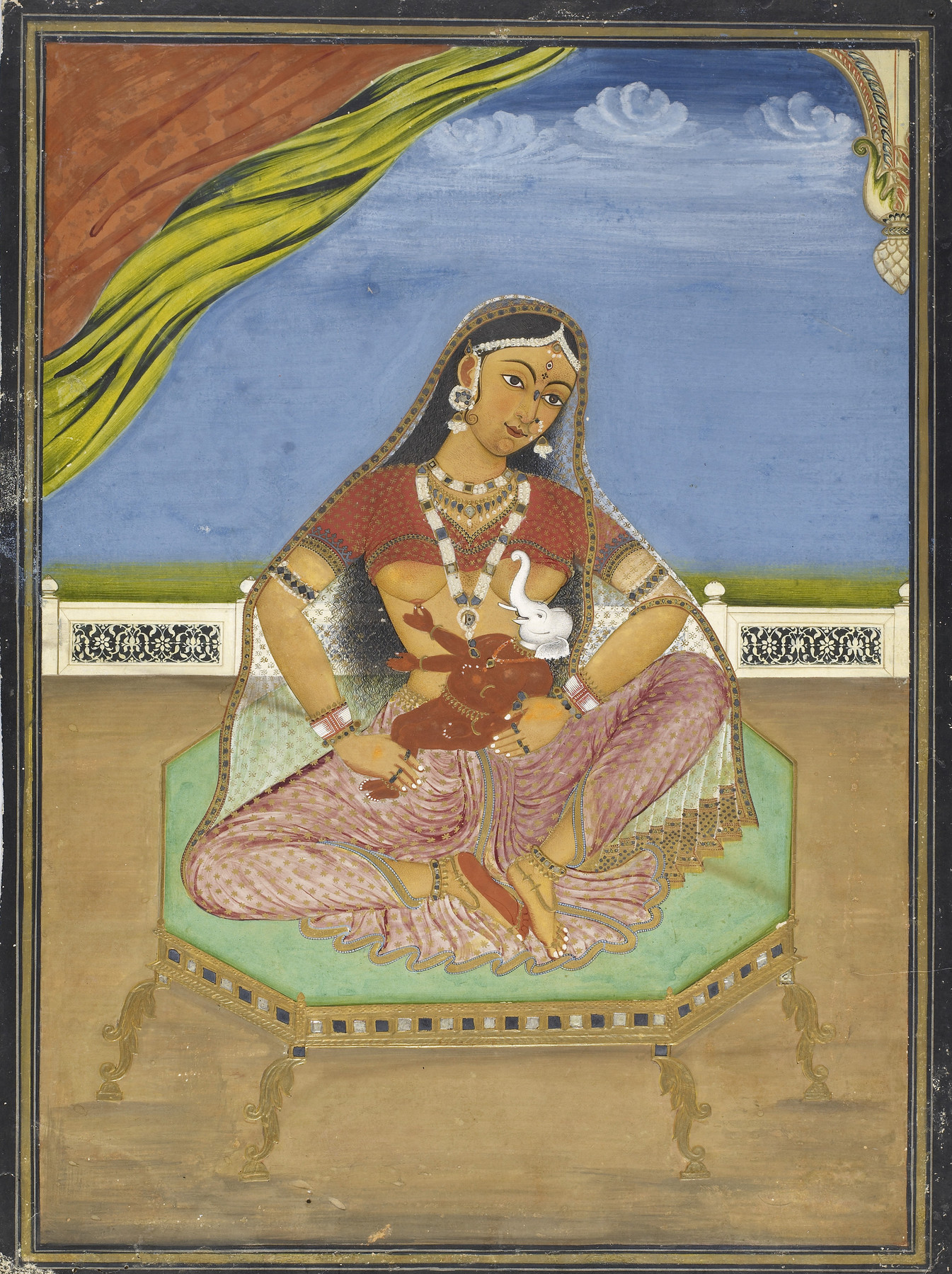Parvati Nursing Ganesha
(India, Nepal, and Tibet)
India’s multiple religious traditions produced lively exchanges in the representation of the divine. Here, the artist adapted Christian iconography of the Virgin and Child for a touching image of the Hindu goddess Parvati nursing her elephant-headed son Ganesha. According to one story, Parvati, wife of the god Shiva, desperately wanted a child and created a boy to guard her door while Shiva was away. Prevented from entering Parvati’s room when he returned, Shiva became so enraged that he decapitated the boy. At Parvati’s insistence, Shiva sent his servants to find the child a new head. They came back with the head of an elephant, and with it Ganesha was restored to life.
Imagine the once-dazzling effects of Parvati’s jewelry and throne. Thin pieces of metal were used to imitate gemstones. The dark gray inserts are made of silver, while the lighter ones are made of copper covered with silver and a transparent red paint, now mostly lost. Although their appearance has changed over time, these dark and light gray inserts would have originally looked like diamonds and rubies. The elaborate jewelry is further enriched with thick white paint, which was skillfully worked with a rounded tool to resemble pearls.
Provenance
Provenance (from the French provenir, 'to come from/forth') is the chronology of the ownership, custody, or location of a historical object. Learn more about provenance at the Walters.
John and Berthe Ford, Baltimore; given to Walters Art Museum, 2001.
Exhibitions
| 2006-2007 | Goddess Divine Energy. Art Gallery of New South Wales, Sydney. |
| 2001-2003 | Desire and Devotion: Art from India, Nepal, and Tibet in the John and Berthe Ford Collection. The Walters Art Museum, Baltimore; Santa Barbara Museum of Art, Santa Barbara; Albuquerque Museum, Albuquerque; Birmingham Museum of Art, Birmingham; Hong Kong Museum of Art, Hong Kong. |
Conservation
| Date | Description | Narrative |
|---|---|---|
| 6/11/2017 | Treatment | examined for exhibition; inpainted; installed in climate package; loss compensation; media consolidation; x-ray florescence |
Geographies
India, Rajasthan, Jaipur (Place of Origin)
Measurements
H: 14 13/16 x W: 10 3/4 in. (37.62 x 27.31 cm); Framed: H: 23 1/8 × W: 19 7/16 × D: 1 1/4 in. (58.74 × 49.37 × 3.18 cm)
Credit Line
Gift of John and Berthe Ford, 2001
Location in Museum
Not on view
Accession Number
In libraries, galleries, museums, and archives, an accession number is a unique identifier assigned to each object in the collection.
In libraries, galleries, museums, and archives, an accession number is a unique identifier assigned to each object in the collection.
W.872




